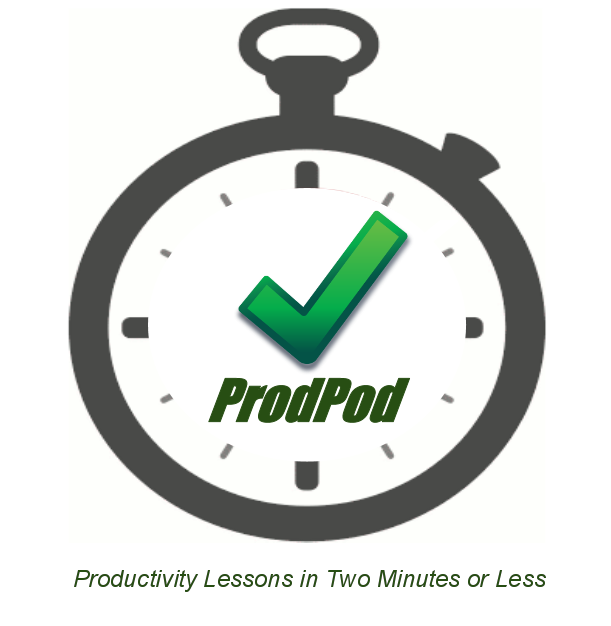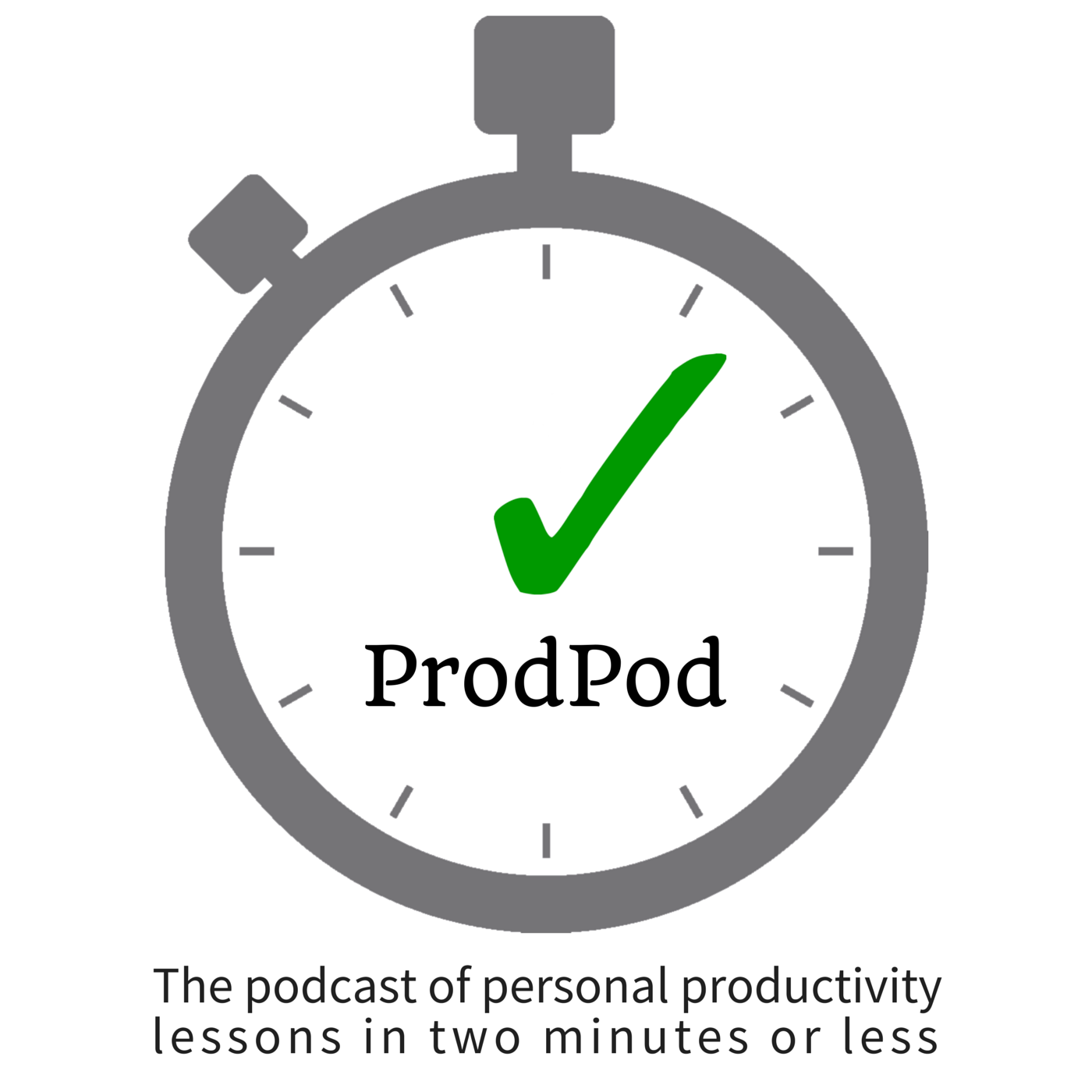Episodes

Tuesday Apr 23, 2013
ProdPod: Episode 62 -- Best-Practices for Blog Reading
Tuesday Apr 23, 2013
Tuesday Apr 23, 2013
The blogosphere is not a new invention, although it was only recently embraced by media and the general consumer public in the late 90s. What does this mean for you and me? Well, it is likely a cornucopia of potentially amazing (and maybe not-so-amazing) content for us. So that reading all this great blog content doesn't become unwieldy, overflowing and overwhelming in our lives, I've put together a series of best-practices (pardon the corporate-speak) to keep Blog Reading a practice of compound benefits to your productivity.
1. Let's start with what you should and shouldn't follow in terms of blogs and bloggers. Less than three major media outlets...the sometimes pump out hundreds of articles per day and it can quickly overwhelm; if they have best-of feeds that limit to just the most important. Monthly purge of articles from blogs which you haven't read *any* posts...this keeps your list manageable. You can only read so much, and you owe it to yourself to find the material that best suits your personal tastes and professional needs.
2. Use an RSS feed reader, like Feedly, to combine all your blog reading into one centralized repository. I have keep two different accounts: one for personal and one for professional reading. You likely don't need that separation, but I need to so I don't get enticed into reading about cognitive neuroscience, personal productivity and electronics gadgets at the office when I should really be reading professional industry blogs!
3. Process this RSS feed reader inbox into Pocket, Instapaper, Readability or another reader app for offline reading if you can't read all the articles in your RSS feed reader in one sitting and you know you'll have time away from your computer or laptop, where you can bang through those articles that same day.
3. Once you set up your RSS feed reader, make the determination whether you will have a master feed from which to process incoming posts, or whether you'll use folders to segment groups of blog feeds together based on category or context. I have days when one or the other method is best suited for me, and I like being able to use different folders for context (@airport, @subway, @brain-dead, etc.) while at times just looking at All Items view and just processing from the master spigot of articles. You decide which best works for you.
4. Every morning, midday or evening before whenever you look at your RSS feed reader again, make sure to clear out your items in your reader app. This way, you don't start to compound reading material that you just aren't going to get to. One trick is to make sure to categorize by tagging every item you receive in your RSS feed reader (either automatically if it's available in your application, or manually as you select the important articles you want to read or reference later, as opposed to something you'd *like* to read for fun but isn't important enough to tag or track), as well as those you add to your reader app. That way, if you just swiftly archive everything you haven't read any given morning you can always retrieve the important reference materials from the category tags in the future quickly and easily. Don't depend on the built-in search functionality of your RSS feed reader or reader app to do the job only your brain can do of cataloging items you believe are important.
So there you have it, a set of techniques for making blog reading a well-greased productivity engine!


No comments yet. Be the first to say something!